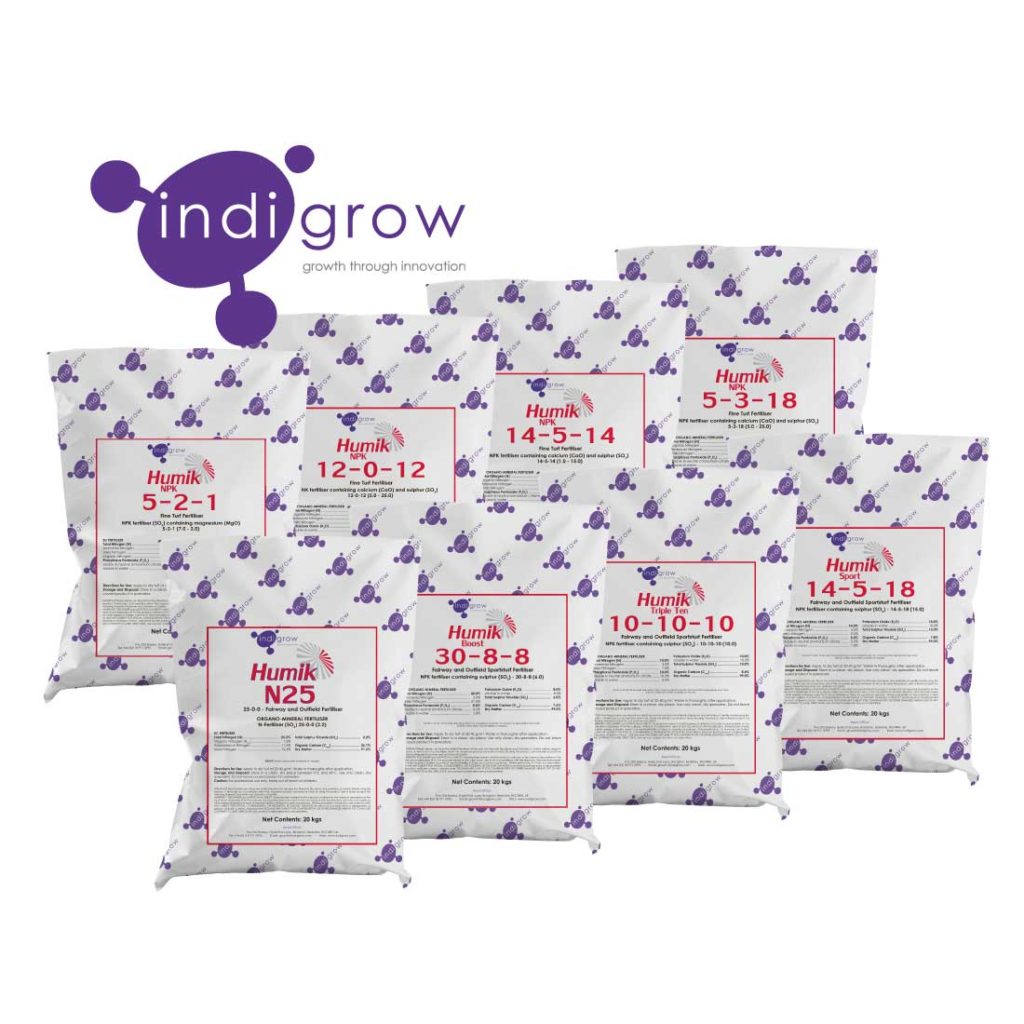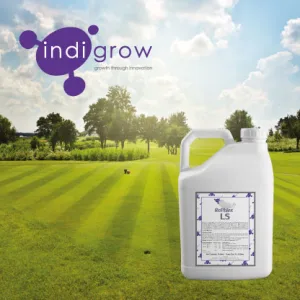Download our Turf & Amenity Brochure → Ag & Hort Brochure →
Alternative Raw Material Sources and Technologies for Slow-Release Outfield Granular Fertilisers

There are a wide range of slow release fertiliser technologies which have been used for many years. These include: Polymer Sulphur Coated Urea (PSCU), Methylene Urea (MU) and Isobutylidenediurea (IBDU), Nitrification Inhibitors, Urease Inhibitors and Stabilised Nitrogen. There are benefits and drawbacks to all of these technologies.
Polymer Sulphur Coated Urea (PSCU)
Originally, PSCU fertilisers were just sulphur coated urea, which proved to offer very unreliable nitrogen release. The addition of a polymer coat improved reliability of nutrient release. As technologies developed, it became possible to add a further resin coat for increased performance, but this is uncommon due to the cost implications. In most PSCU fertilisers, the coated component (nitrogen) is generally blended with phosphate and potassium.
Methylene Urea (MU) and Isobutylidenediurea (IBDU)
Methylene Urea is manufactured to create polymeric molecules. These chains are of different lengths and give varying nitrogen release patterns. MU fertilisers are often more effective at higher ambient temperatures and are commonly used in warmer climates. The Isobutylidenediurea specifically offers a single chain length and relies on temperature and biological activity to release urea.
Newer Technologies
More recently, as the fertiliser industry has looked to move towards more sustainable products, the use of organic bases and humic substances has increased in the production of slow-release fertilisers.
The organic base products contain naturally occurring organic nitrogen (Norg), which is much slower to be broken down and released than conventional nitrogen sources like nitrate or ammonia. The organic base materials can also help to stimulate the naturally occurring soil bacteria.
Humic Substances
The humic substances used to manufacture fertilisers are naturally occurring, but are often processed before being used in manufacture. When these natural humic substances are combined with nitrogen, phosphorous and/or potassium, they can form complexes, which are much slower to be broken down by the plant and help to give an extended release period for the nutrients. Humic acid also acts as a carrier in the soil for naturally occurring nutrients, bringing additional benefits for the plant as well as enabling the slow release of the N, P and K elements.
Golf Course Fairway Trials
During Spring 2021, trials were undertaken to establish if a product based on humic substances was able to release nitrogen for as long or longer than the other slow release nitrogen technologies like PSCU.
Four products were tested, two traditional slow release fertilisers (a 40% coated PSCU and a 93% resin coated product) and two newer technology formulations (one organic base and one based on humic substances).
The protocol utilised a fully randomised plot design for maximum statistical effect with all product applied at recommended rate of 25 g per sq.m. After the single application was made, measurements were taken by NDVI (Normalised Differential Vegetation Index) to give us a direct measurement of turfgrass sward density at 14, 28, 42 and 56 days after treatment. The site was a parkland golf fairway in North Yorkshire, with a clay loam soil construction.
NDVI readings consistently showed that humic base product produced the most dense turfgrass sward at all measure time intervals compared to other products, indicating that the nutrients were still being released to the plant and encouraging new growth.
Our New Slow Release Outfield Granular Fertilisers
Based on the outcome of these trials, six additional fertilisers based on humic substances have been formulated for the 2022 season, which will be sold under the brand name “Humik”. These products, three fine turf and three outfield fertilisers expand the existing range from two products to a total of eight.
More information on these new products can be found by clicking this link.





